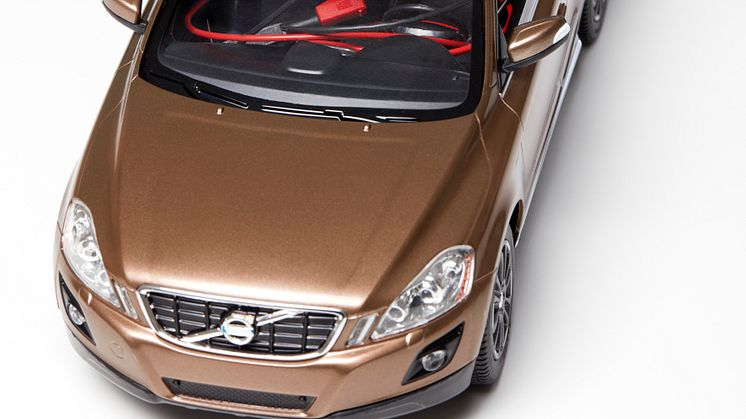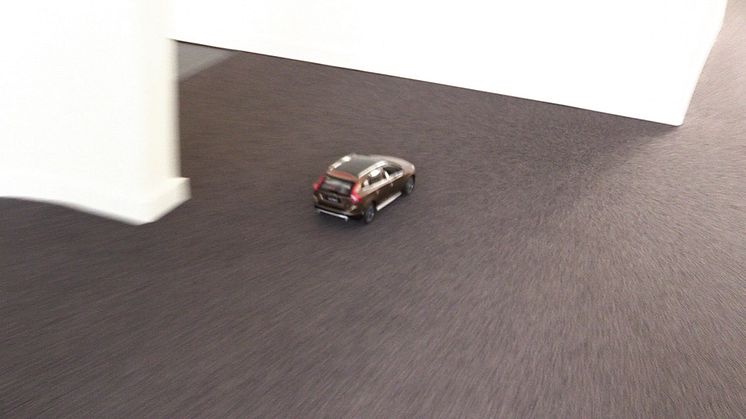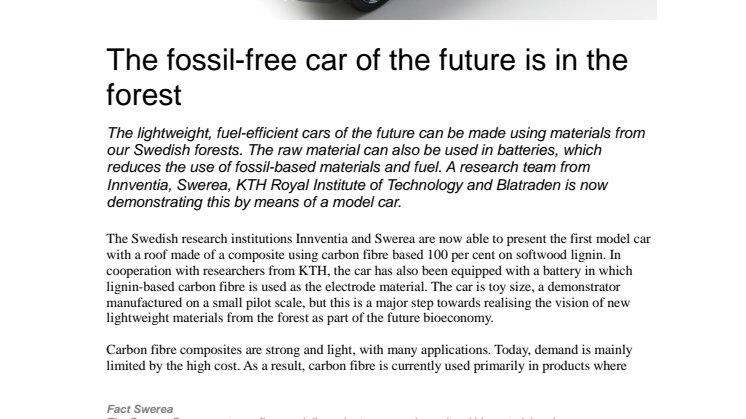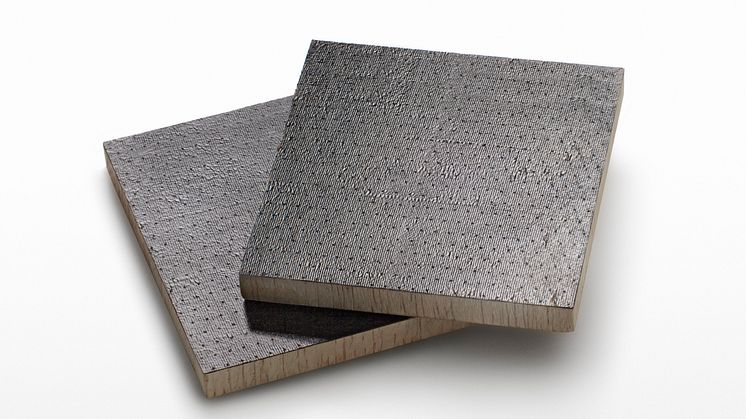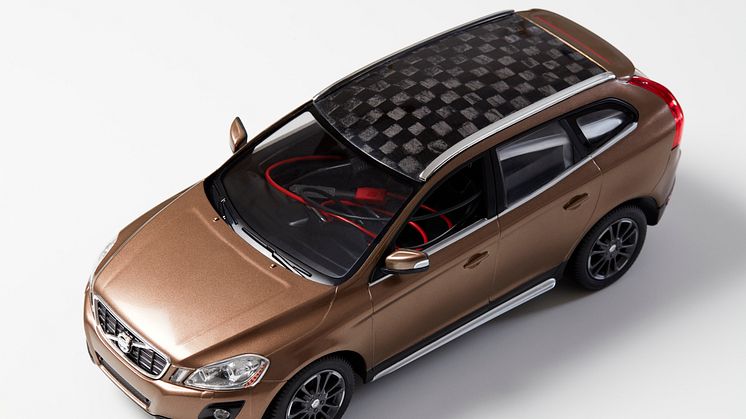
Pressmeddelande -
The fossil-free car of the future is in the forest
The lightweight, fuel-efficient cars of the future can be made using materials from our Swedish forests. The raw material can also be used in batteries, which reduces the use of fossil-based materials and fuel. A research team from Innventia, Swerea, KTH Royal Institute of Technology and Blatraden is now demonstrating this by means of a model car.
The Swedish research institutions Innventia and Swerea are now able to present the first model car with a roof made of a composite using carbon fibre based 100 per cent on softwood lignin. In cooperation with researchers from KTH, the car has also been equipped with a battery in which lignin-based carbon fibre is used as the electrode material. The car is toy size, a demonstrator manufactured on a small pilot scale, but this is a major step towards realising the vision of new lightweight materials from the forest as part of the future bioeconomy.
Carbon fibre composites are strong and light, with many applications. Today, demand is mainly limited by the high cost. As a result, carbon fibre is currently used primarily in products where performance is the priority. Lignin is a by-product of paper pulp manufacturing and can be produced cost-effectively. Using lignin would lead to significantly increased access to a raw material that is also biobased. Even ‘ordinary’ cars and other everyday products could be produced from carbon fibre. Lighter cars lead to lower fuel consumption or longer ranges for electric cars.
In 2014, Innventia and Swerea launched a plan for how Swedish lignin-based carbon fibre could be available within a ten-year period. The next step according to researchers is a process line on a pilot scale with continuous production in order to identify the challenges that always arise when scaling up. In addition, larger quantities of carbon fibre are required to evaluate composites and composite components.
“Further efforts are required to achieve our goal. This demonstrator is a clear example of how cooperation between our test beds and R&D infrastructure helps us to move forward. Our work on various projects is aimed at using lignin in as valuable a way as possible,” says Per Tomani, Team Leader for Lignin & Carbon Fibres at Innventia.
“Collaboration has definitely been a success factor for development. With the knowledge of lignin as a raw material possessed by Innventia, plus Swerea’s knowledge of composites and the electrochemistry know-how of KTH, led by Professor Göran Lindbergh, we have been able to assemble the puzzle from three different quarters,” says Project Manager Anders Uhlin at Innventia.
“Alongside this development, intensive work is also taking place to develop the existing manufacturing methods for carbon fibre composites. We believe in the large-scale production of lightweight materials, and the manufacturing methods for composites must therefore become more cost-effective. There is no reason to believe that it will not prove possible to replace today’s fossil-based carbon fibres with lignin-based carbon fibre in these manufacturing processes,” says Birgitha Nyström, Research Manager in Materials Engineering at Swerea SICOMP.
The work has been carried out as part of the BioInnovation strategic innovation programme, a joint venture on the part of VINNOVA, Formas and the Swedish Energy Agency. The prototype project involved Innventia, Swerea SICOMP, KTH, Blatraden and industry partners within the Innventia Research Programme 2015-2017.
For more information, please contact:
Birgitha Nyström, Swerea SICOMP
+46 (0)76-784 43 09
birgitha.nystrom@swerea.se
Anders Uhlin, Innventia
+46 (0)768-767 131
anders.uhlin@innventia.com
Per Tomani, Innventia
+46 (0)768-767 281
per.tomani@innventia.com
Relaterade länkar
Ämnen
Kategorier
Swerea-koncernen skapar, förädlar och förmedlar forskningsresultat inom områdena material-, produktions- och produktutveckling. Målet är att skapa affärsmässig nytta för medlemmar och övriga kunder och att stärka konkurrens- och innovationsförmågan hos näringslivet i Sverige. Koncernen har ca 550 medarbetare och omsätter 680 Mkr/år. Verksamheten bedrivs i fem forskningsinstitut (Swerea IVF, Swerea KIMAB, Swerea MEFOS, Swerea SICOMP och Swerea SWECAST). Verksamhet finns i Stockholm, Jönköping, Luleå, Mölndal, Piteå, Borlänge, Eskilstuna, Linköping, Trollhättan och Oslo, samt i Brest och St Etienne i Frankrike.


